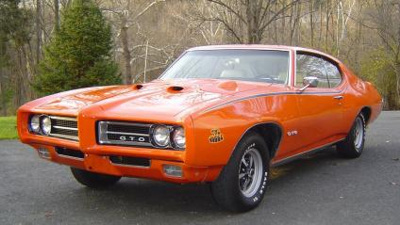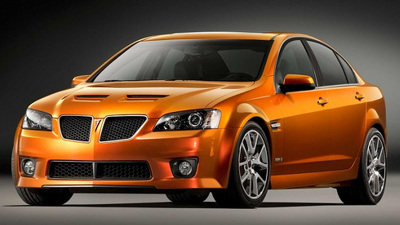Maybe we’re just too cynical around here. We’ve seen United States Taxpayer Dollars go to Chrysler and Chevrolet and we’ve seen the Cash for Clunkers program throw more of the Citizens’ money towards pushing the American car market.
Has it worked? Have the execs at these companies learned anything? Imports made out nicely with small car offerings for “clunkers”. Ford did OK. But they did not take the “bail out”. GM and Chrysler sales fell in August.
Maybe they just don’t get it. Maybe they don’t see the American auto buyers’ market the way they should. Chrysler has the 2010 line out there and the cars look good and are likely great vehicles offering the range from sipping economy to road burning performance. The question is… Will the public take notice?
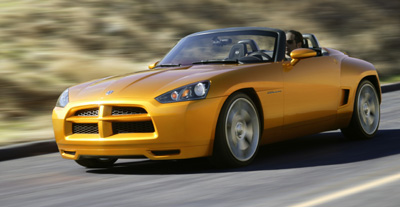 Take, for instance, the 2010 Dodge Demon. It looks sharp and reports list it with a 172 horsepower, 4 cylinder engine. It should appeal to sports car lovers with an eye towards effeciency.
Take, for instance, the 2010 Dodge Demon. It looks sharp and reports list it with a 172 horsepower, 4 cylinder engine. It should appeal to sports car lovers with an eye towards effeciency.
However, it has been introduced as a concept car. It might showcase in Europe. Will the U.S. have this car? If not… Why not?
A few other details holding it back are unclear sources for the engine and base chassis. The chassis could come from Chevy… from China! The engines could be Mitsubishi or Hyundai produced. So what we have is a Chinese Chevy with a Japanese or Korean engine and a Dodge logo glued on the front. Yes… I can see where Americans would be clammering to get one.
Another hurdle is the mindset. We’ve heard what Chrysler and Dodge execs have to say about the 2010 lines. Peter Fong, President & CEO at Chrysler had this to say.
“The Chrysler brand delivers provocative, eye-catching designs engineered for passionate living. Our owners are expressive, creative and vibrant, and seek a vehicle that rewards their independence. Through American design and ingenuity, Chrysler strives to deliver premium vehicles that exceed the aspirations and needs of our customers, all at a great value.”
Here’s an idea, Mr. Fong. How about “sexy, fast cars that offer economy and heart-thumping excitement at every acceleration, every turn and, yes, even every trip to the corner market.” Dammit, man! What does “expressive, creative and vibrant” have to do with how the car feels on a country road at 62mph?
The Dodge CEO, Michael Accavitti, is no better.
“In 2010, the Dodge brand stands as the quintessential American brand that continues to defy industry convention in order to build products that allow customers to do more, grab more life and flat-out live life to the fullest.”
Michael…? Quintessential…? You want to sell Challengers you better drop “industry convention” and let consumers know the thing is going to snap them back against the headrest when the light turns green!
Have you people been out of the office and seen the way American consumers think, speak and live? Have you seen the way Mitsubishi, Honda, Mazda and others from the other side market their vehicles? All we’re saying is you would be better off talking to real people instead of reading a thesaurus. You aren’t selling cars to first year art students. You are selling cars to Americans. If you can’t tell us what you’ve got without using words like “aspirations” and “quintessential” you had better prepare for the biggest year-end closeout clearance sale you’ve ever had. We’ll look for it in November and December of 2010.
Chrysler and GM might well be building cars “Americans” would want. Unless they can deliver a message to let us know that, they might as well be selling burgers at a PETA convention.
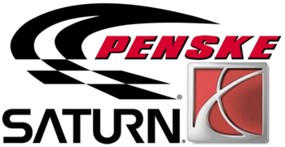 That said, can we assume that knowledge, engineering and applications of building race cars from the ground up can directly translate to building production cars for the general public? We likely have our chance to find out. Roger Penske (
That said, can we assume that knowledge, engineering and applications of building race cars from the ground up can directly translate to building production cars for the general public? We likely have our chance to find out. Roger Penske (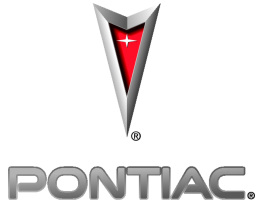 The Pontiac brand is being put out by General Motors. Is this a move of logic by General Motors or is this a pressure move from the Federal Government which stands to take over more than 50% of GM stock in cancelling a chunk of bailout debt? Pontiac is a “performance” brand name with a history of muscle cars, sports cars and racing heritage. The current administration is certainly waist deep in “green” cohorts and may not want to have a controlling interest in a brand known for burning rubber and turning fast laps. Is Pontiac really losing money or is it a show of “green” power? Currently, Pontiac power plants and car models are running and winning on the track. Just recently at Virginia International Raceway, a Pontiac powered Daytona Prototype won the class in the Bosch Engineering 250. On the same track running with the DP class, a Pontiac GXP.R won the GT class. Pontiacs are selling. They are out on the road with their split grills and diamond point logos. So the question remains… are they really losing so much on the showroom floor? More so than other brands…? Really?
The Pontiac brand is being put out by General Motors. Is this a move of logic by General Motors or is this a pressure move from the Federal Government which stands to take over more than 50% of GM stock in cancelling a chunk of bailout debt? Pontiac is a “performance” brand name with a history of muscle cars, sports cars and racing heritage. The current administration is certainly waist deep in “green” cohorts and may not want to have a controlling interest in a brand known for burning rubber and turning fast laps. Is Pontiac really losing money or is it a show of “green” power? Currently, Pontiac power plants and car models are running and winning on the track. Just recently at Virginia International Raceway, a Pontiac powered Daytona Prototype won the class in the Bosch Engineering 250. On the same track running with the DP class, a Pontiac GXP.R won the GT class. Pontiacs are selling. They are out on the road with their split grills and diamond point logos. So the question remains… are they really losing so much on the showroom floor? More so than other brands…? Really?